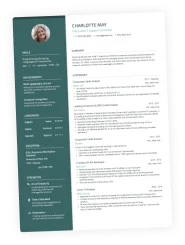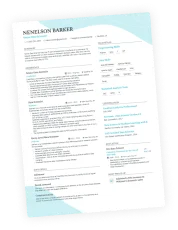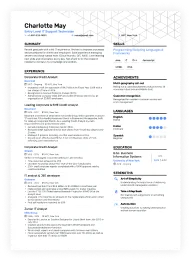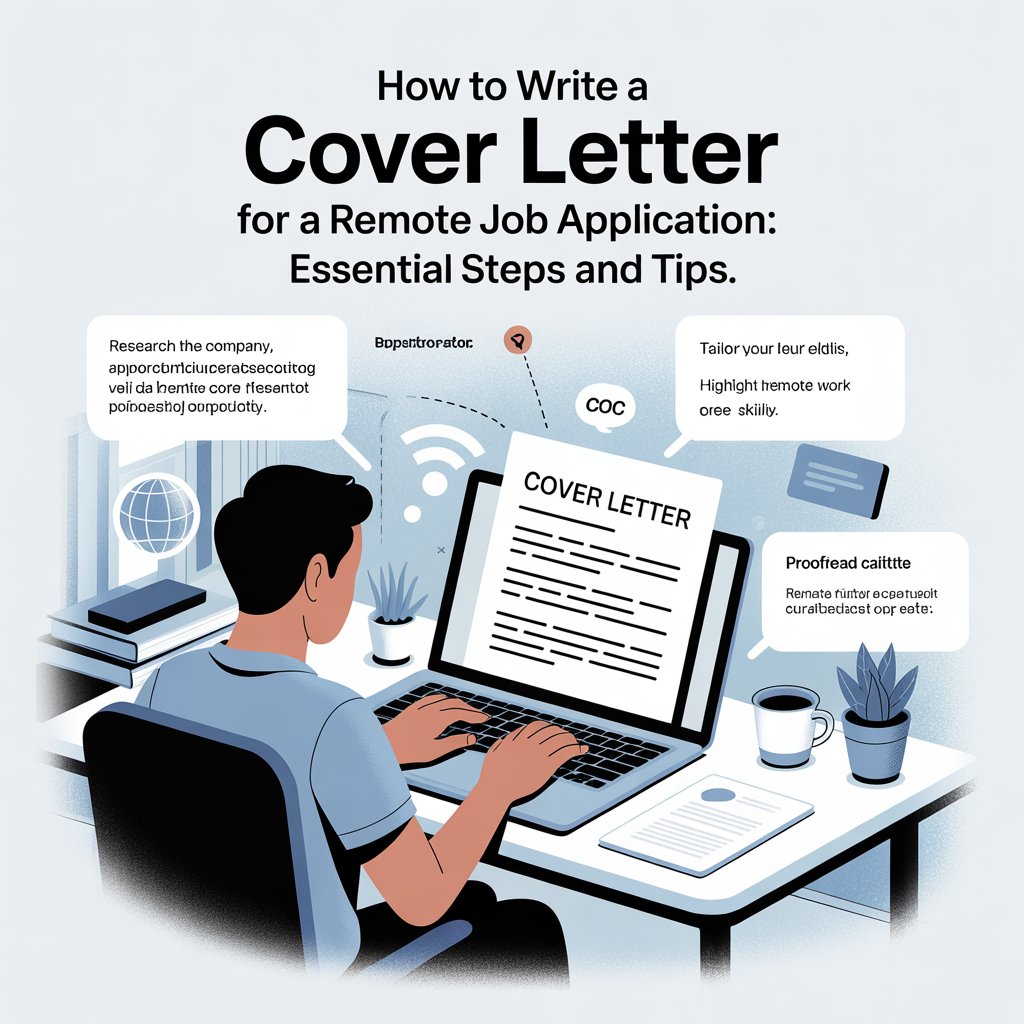Crafting a strong cover letter is essential for job freshers aiming to make a great first impression on potential employers. It’s not just a formality; it’s your chance to showcase your personality, enthusiasm, and fit for the role. While your resume lists your qualifications, your cover letter can tell a story about who you are and why you’re excited about the opportunity. This guide will walk you through the key elements of writing an effective cover letter for job freshers, along with tips and examples to help you stand out.
Key Takeaways
- A cover letter is crucial for freshers to express their interest and personality.
- Tailor each cover letter to the specific job and company to show genuine interest.
- Highlight relevant skills and experiences, even if they come from coursework or projects.
- Keep it concise—one page is ideal, with clear and correct language.
- Follow up after sending your cover letter to show your enthusiasm for the position.
Understanding the Purpose of a Cover Letter for Job Freshers
Why a Cover Letter Matters
Okay, so you’re fresh out of school and diving into the job market. You might be thinking, “Do I really need a cover letter?” The answer is almost always yes. A cover letter is your chance to make a first impression that goes beyond your resume. It’s where you show your personality and explain why you’re genuinely interested in the job. Think of it as your personal sales pitch. It’s not just repeating what’s on your resume; it’s about connecting the dots for the employer and showing them how your skills and experiences align with what they’re looking for. It shows you’ve taken the time to understand the company and the role, which speaks volumes about your work ethic and enthusiasm. A well-crafted cover letter can be the difference between landing an interview and getting lost in the pile. It’s a chance to highlight your unique value proposition and make a memorable impact.
How It Complements Your Resume
Your resume is a summary of your qualifications and experience, but a cover letter adds context and personality. While your resume lists your skills and job history, the cover letter explains why those skills matter to the specific job you’re applying for. It’s your opportunity to tell a story, connect your past experiences to the company’s needs, and demonstrate your understanding of the role. Think of your resume as the what, and your cover letter as the why. A good cover letter doesn’t just repeat information from your resume; it expands on it, providing examples and insights that make you a more compelling candidate. It’s about showing, not just telling, why you’re the right fit. For example, instead of just saying you have “strong communication skills,” you can describe a time you used those skills to successfully lead a project or resolve a conflict. This is how you make your application stand out. An entry-level cover letter is a great way to showcase your potential.
What Employers Look For
When employers read cover letters from job freshers, they’re looking for more than just a list of qualifications. They want to see your enthusiasm for the role and the company. They’re assessing your communication skills, your attention to detail, and your ability to articulate why you’re a good fit. Employers also want to see that you’ve done your research and understand the company’s mission and values. A generic cover letter that could be sent to any company is a major red flag. They’re looking for candidates who are genuinely interested in their organization and who have taken the time to tailor their application accordingly. Here’s a quick breakdown:
- Enthusiasm and genuine interest
- Clear and concise communication
- Understanding of the company and the role
- Attention to detail (no typos!)
- A clear connection between your skills and the job requirements
Ultimately, employers are trying to gauge your potential and your fit within their company culture. They want to see that you’re not just looking for any job, but that you’re specifically interested in their job and that you have the potential to grow and contribute to their team. A strong cover letter can demonstrate all of these things, even if you don’t have a ton of work experience. A well-crafted cover letter can make all the difference.
Key Components of an Effective Cover Letter
Introduction and Purpose
The introduction is your first chance to grab the reader’s attention. Clearly state the position you’re applying for and how you found the opening. It’s also a good idea to briefly introduce yourself and highlight what makes you a strong candidate. Think of it as your elevator pitch in written form. You want to make a strong first impression, so make sure your opening is concise and engaging.
Highlighting Relevant Skills
This section is where you connect your skills and experiences to the job requirements. Don’t just list your skills; provide specific examples of how you’ve used them. Use the job description as your guide, and focus on the skills and qualifications that are most relevant to the position. If you’re applying for a summer job or internship and don’t have directly related experience, focus on transferable skills like leadership, communication, and problem-solving. You can also use MIT’s extensive alumni network to seek first-hand knowledge.
Closing with Confidence
The closing paragraph should reiterate your interest in the position and express your enthusiasm for the opportunity. Thank the employer for their time and consideration, and include a call to action, such as expressing your eagerness to discuss your qualifications further in an interview. End on a positive and confident note, leaving the reader with a lasting impression of your professionalism and enthusiasm. Remember to proofread carefully to avoid any spelling or grammar errors. You want to convince the reader that your interest in the job and company are genuine and specific. You also want to demonstrate ways that your experience has prepared you for the role by sharing a few brief stories that highlight your qualifications. This takes time and research; use the job description and the company’s web site or LinkedIn page to identify traits and skills the company values.
A strong closing statement leaves the employer with a clear understanding of your interest and a positive impression of your candidacy. It’s your final opportunity to reinforce your value and encourage them to take the next step.
Tailoring Your Cover Letter to Specific Jobs
Researching the Company
Before you even start writing, do your homework. I mean, really dig in. Don’t just skim the “About Us” page. Look at their recent projects, their mission statement, and their values. Check out their social media presence. What kind of language do they use? What are they talking about? This will give you clues about their culture and what they’re looking for in an employee. You can use the company’s website or LinkedIn page to identify traits and skills the company values.
Understanding the company’s goals and values will help you frame your skills and experiences in a way that shows you’re a good fit.
Aligning Your Skills with Job Requirements
Now that you know what the company is all about, it’s time to connect the dots between your skills and what they need. Don’t just list your skills; explain how they’ll help the company achieve its goals. Use specific examples to illustrate your points. If the job description mentions “project management experience,” don’t just say you have it. Describe a project you managed, the challenges you faced, and the results you achieved. Focus on transferable skills that will add value to the role – leadership, communication, problem-solving, project management, etc.
Here’s a simple way to think about it:
- What are the key requirements of the job?
- What skills and experiences do you have that match those requirements?
- How can you demonstrate those skills and experiences in your cover letter?
Using Keywords from the Job Description
Applicant Tracking Systems (ATS) are often used to screen cover letters and resumes. These systems scan for specific keywords related to the job requirements. Make sure to include these keywords in your cover letter to increase your chances of getting past the initial screening. But don’t just stuff your letter with keywords; use them naturally and strategically. An effective cover letter is directed towards a specific position or company, and describes examples from your experience that highlight your skills related to the role. You should clearly state the position applied for and highlight relevant qualifications without merely repeating the resume.
Here’s a quick checklist:
- Identify the key skills and qualifications mentioned in the job description.
- Incorporate those keywords into your cover letter.
- Use them in a natural and relevant way.
Common Mistakes to Avoid in Your Cover Letter
Generic Content
One of the biggest mistakes freshers make is submitting a generic cover letter. Employers can spot a template from a mile away. Personalization is key. It shows you’ve taken the time to understand the company and the role. A generic letter suggests you’re not genuinely interested, just mass-applying everywhere. Tailor each letter to the specific job and company.
Spelling and Grammar Errors
Nothing screams unprofessional like spelling and grammar mistakes. Always proofread your cover letter carefully. Even better, ask a friend or family member to review it. Small errors can make a big difference in how you’re perceived. It shows a lack of attention to detail, which is a red flag for many employers. Use tools like Grammarly, but don’t rely on them completely. Human review is still essential. You can also use RoboApply to simplify the application process.
Overly Lengthy Letters
Keep your cover letter concise and to the point. Aim for one page. Recruiters often have limited time, and they won’t read a long, rambling letter. Focus on your most relevant skills and experiences. Avoid unnecessary details or fluff. A shorter, well-written letter is much more effective than a long, poorly written one. Remember, effective cover letter should be concise.
A good rule of thumb is to focus on quality over quantity. Highlight your key strengths and how they align with the job requirements. Avoid repeating information already in your resume. Use the cover letter to add context and personality to your application.
Using a Professional Format for Your Cover Letter
First impressions matter, and your cover letter’s format is the initial thing an employer notices. A clean, well-organized layout shows attention to detail and professionalism. Let’s break down how to achieve this.
Choosing the Right Font and Size
Font choice might seem minor, but it significantly impacts readability. Stick to professional, easy-to-read fonts like Arial, Times New Roman, Calibri, or Helvetica. Avoid anything too decorative or unusual. Font size should be between 10 and 12 points; anything smaller strains the reader’s eyes, while anything larger looks unprofessional. Consistency is key – use the same font throughout your entire cover letter. A good cover letter format is essential.
Proper Layout and Structure
A standard cover letter should follow a business letter format. This includes:
- Your contact information at the top (name, address, phone number, email).
- The date.
- The employer’s contact information (name, title, company, address).
- A formal salutation (e.g., “Dear Mr./Ms. [Last Name],”).
- Clearly defined paragraphs for the introduction, body, and conclusion.
- A professional closing (e.g., “Sincerely,” or “Best regards,”).
- Your signature (if sending a hard copy) or typed name.
Use single spacing within paragraphs and double spacing between paragraphs. Keep margins around one inch on all sides. A well-structured layout makes your letter easy to scan and highlights the most important information. Think of it as creating a visual hierarchy that guides the reader through your qualifications. A clean layout shows you respect the reader’s time and attention. It’s all about making a positive and lasting impression. Remember to tailor your cover letter to each job.
Including Contact Information
Your contact information should be prominently displayed at the top of your cover letter. This includes:
- Full Name
- Address
- Phone Number
- Email Address
Make sure your email address is professional (avoid nicknames or slang). Double-check that all information is accurate and up-to-date. This section ensures the employer can easily reach you for an interview. Consider adding your LinkedIn profile URL as well, if you have one. This provides an easy way for the employer to learn more about your professional background. It’s a small detail, but it can make a big difference.
A professional format demonstrates your attention to detail and respect for the employer. It makes your cover letter easy to read and highlights your key qualifications. By following these guidelines, you can create a strong first impression and increase your chances of landing an interview.
Crafting a Compelling Introduction
Your cover letter’s introduction is your first, and possibly only, chance to grab the employer’s attention. It’s where you make a strong first impression and set the stage for the rest of your application. A well-crafted introduction can significantly increase your chances of getting your resume read and landing an interview. It’s more than just stating your name; it’s about showing your enthusiasm and making a connection.
Hooking the Reader’s Attention
Start with something that makes the reader want to keep reading. Avoid generic phrases like “I am writing to apply for…” Instead, try to open with a statement that showcases your personality or highlights a relevant achievement. Maybe you read about a recent company initiative that excites you, or you admire their work in a specific area. Whatever it is, make it genuine and engaging. Think of it as your elevator pitch – short, sweet, and memorable. For example, instead of saying “I’m applying for the marketing position,” try something like, “Having followed [Company Name]’s innovative campaigns for years, I’m eager to contribute my skills to your dynamic team.” This shows you’ve done your research and are genuinely interested. Remember, you want to stand out from the pile of other applications. A strong hook can do just that. It’s all about making them curious to learn more about you and what you can bring to the table. You can also state the job title and company name to personalize your introduction.
Stating Your Interest Clearly
After you’ve hooked the reader, be direct about the position you’re applying for and why you’re interested. This section should clearly state the role you’re targeting and demonstrate your understanding of what the company is looking for. Don’t assume the employer knows why you’re a good fit; spell it out for them. Briefly mention your key skills and how they align with the job requirements. This is also a good place to show your enthusiasm for the company’s mission or values. For instance, you could say, “I am writing to express my strong interest in the Entry-Level Software Engineer position at [Company Name], as advertised on [Platform]. Your commitment to innovation in sustainable technology deeply resonates with my own passion for creating environmentally conscious solutions.” This approach not only states your interest but also connects it to something bigger, showing you’ve thought about why you want to work there. Remember, clarity is key. Make it easy for the employer to see why you’re applying and why they should consider you.
Mentioning a Connection or Referral
If you have a connection at the company, mentioning them in your introduction can be a powerful way to get noticed. A referral can instantly give you a leg up, as it shows you have an inside connection and come recommended. Be sure to get permission from the person before using their name. Start by mentioning their name and your relationship, then briefly explain how they influenced your decision to apply. For example, “[Name], a current Marketing Manager at [Company Name], suggested I reach out regarding the open Marketing Assistant position. After learning more about the role and the company culture from [Name], I am confident that my skills and experience align well with your team’s needs.” If you don’t have a direct referral, mentioning someone you admire at the company or referencing a conversation you had with a recruiter at a career fair can also be effective. Just make sure it’s relevant and adds value to your introduction. A strong cover letter is essential for job applications, serving as a personal introduction that highlights your skills and experiences.
Showcasing Your Skills and Experiences
It’s time to really sell yourself! Your cover letter is the place to show employers what you’re made of. Don’t just list skills; demonstrate them with examples. Think of it as telling a story where you’re the hero, and your skills are your superpowers.
Using the STAR Method
The STAR method (Situation, Task, Action, Result) is your best friend here. It helps you structure your experiences in a way that’s easy for employers to understand. For each skill you want to highlight, think of a specific situation where you used that skill. What task were you trying to accomplish? What actions did you take? And most importantly, what was the result? Quantify the result whenever possible. Did you increase sales by 15%? Did you reduce errors by 20%? Numbers speak volumes. Using the STAR method can make your experiences more relatable.
Focusing on Transferable Skills
As a job fresher, you might not have tons of direct work experience. That’s okay! Focus on transferable skills. These are skills you’ve gained in other areas of your life – school, extracurricular activities, volunteer work – that can be applied to the job you’re applying for. For example, if you were the treasurer of a club, you developed budgeting and financial management skills. If you worked on a group project, you honed your teamwork and communication skills.
Here’s a quick list of skills that are almost always valuable:
- Communication (written and verbal)
- Problem-solving
- Teamwork
- Leadership
- Time management
Including Relevant Coursework or Projects
Don’t underestimate the power of coursework and projects! If you’ve taken a class or worked on a project that’s relevant to the job, definitely mention it. Briefly describe the project, your role, and what you accomplished. This shows that you have the foundational knowledge and skills needed to succeed in the role. Make sure to tailor your cover letter to specific jobs to highlight the most relevant coursework.
Think of your cover letter as a bridge connecting your past experiences to your future career. It’s your chance to show employers how your skills and experiences make you the perfect fit for the job. Don’t be afraid to brag a little – just make sure you can back it up with evidence!
Writing a Strong Closing Statement
Reiterating Your Interest
Okay, so you’ve made it this far. The closing statement? It’s your last shot to really drive home why they should pick you. Don’t just fade out. Make it clear, again, that you’re genuinely interested in the job. Something like, “I am very interested in the opportunity and believe my skills align well with the requirements” works. It’s direct, it’s polite, and it reminds them of your enthusiasm. Think of it as a final, confident nod. It’s also a good idea to briefly restate why you are a good fit for the role. This is your chance to reiterate your interest and leave a positive lasting impression.
Encouraging Further Discussion
Don’t just leave them hanging. Invite them to talk more. A simple line like, “I look forward to discussing my application further” does the trick. It shows you’re proactive and eager to move forward. It also subtly prompts them to actually do something – like call you for an interview. It’s a soft call to action, but it can make a difference. You want to make it as easy as possible for them to take the next step.
Thanking the Employer
Always, always, always thank them for their time and consideration. It’s basic politeness, but it goes a long way. A simple “Thank you for considering my application” is fine. It shows respect for their effort in reviewing your application. It’s a small gesture that speaks volumes about your professionalism. Plus, it leaves them with a good feeling about you. And in a stack of applications, being the polite one can definitely help you stand out. It’s the cherry on top of a well-crafted cover letter.
Examples of Cover Letters for Job Freshers
Entry-Level Position Example
Let’s look at a sample cover letter for an entry-level position. It’s important to remember that your cover letter should highlight your enthusiasm and potential, even if you lack direct experience. Focus on transferable skills and relevant coursework. For example, if you’re applying for a marketing role, mention any projects where you demonstrated creativity or analytical skills. Tailor the letter to the specific job description, showing that you understand what the company is looking for. Here’s a quick checklist:
- Address the letter to a specific person if possible.
- Clearly state the position you’re applying for.
- Highlight 2-3 key skills that match the job description.
Internship Application Example
Applying for an internship? Your cover letter is extra important. Internships are often highly competitive, so you need to stand out. Emphasize your eagerness to learn and contribute. If you’ve had any relevant volunteer experience or extracurricular activities, be sure to mention them. Show how the internship aligns with your career goals. A good approach is to:
- Research the company’s mission and values.
- Explain why you’re interested in their specific internship program.
- Quantify your achievements whenever possible (e.g., “Increased social media engagement by 15% during a school project”).
General Template for Freshers
Creating a general template can save you time, but remember to customize it for each application. Start with a strong opening paragraph that grabs the reader’s attention. In the body paragraphs, showcase your skills and experiences, using the STAR method (Situation, Task, Action, Result) to provide concrete examples. End with a confident closing statement, reiterating your interest and thanking the employer for their time. Here’s a basic structure:
- Introduction: State your purpose and express your interest.
- Body: Highlight relevant skills and experiences.
- Conclusion: Reiterate your interest and thank the employer.
Remember, your cover letter is your first impression. Make it count by proofreading carefully and ensuring it’s free of errors. A well-written cover letter can significantly increase your chances of landing an interview.
To help you get started, consider using a cover letter template as a base. Also, remember to explore examples to get a better idea of what works.
Additional Resources for Writing Cover Letters
Online Tools and Templates
There are many online resources available to assist you in crafting a compelling cover letter. These tools often provide templates and examples that can serve as a starting point. Templates can be especially helpful if you’re unsure about the proper format or structure. Some websites also offer grammar and spell-checking features to help you polish your writing. Don’t hesitate to explore these options to find what works best for you.
Career Services for Guidance
Most universities and colleges offer career services that can provide personalized assistance with your job search. Career advisors can review your cover letter, offer feedback on your resume, and conduct mock interviews. They can also help you identify your strengths and skills, and tailor your application materials to specific job requirements. [cover letter for beginners](#2f9a] is a great way to start, but personalized guidance can make a big difference.
Books and Articles on Job Applications
Numerous books and articles offer in-depth advice on job applications, including cover letter writing. These resources often provide detailed explanations of the principles of effective communication, as well as specific strategies for showcasing your skills and experiences. Consider exploring these resources to gain a deeper understanding of the job application process. Here are some topics you might find:
- Crafting a compelling narrative
- Highlighting transferable skills
- Addressing gaps in your experience
Remember, a well-written cover letter can significantly increase your chances of landing an interview. Take advantage of the resources available to you to create a cover letter that stands out from the competition.
The Importance of Follow-Up After Sending Your Cover Letter
When to Follow Up
Knowing when to follow up after submitting your cover letter and resume is key. Don’t be too hasty; give the employer a reasonable amount of time to review your application. A good rule of thumb is to wait about one to two weeks after the application deadline, or if no deadline was specified, one to two weeks after you submitted your application. Following up too soon can make you seem impatient or pushy, while waiting too long might make the employer think you’ve lost interest. Consider the size of the company and the complexity of the hiring process. Larger companies often have longer review periods. If you interviewed, sending a thank you note within 24 hours is a must. After that, if you haven’t heard back, a follow-up email after a week or two is appropriate.
How to Craft a Follow-Up Email
Crafting an effective follow-up email is an art. Keep it concise and professional. Start by reiterating your interest in the position and briefly mention something specific that excites you about the role or the company. Refer to your previous application and mention the date you submitted it. Avoid sounding demanding or entitled; instead, express your enthusiasm and willingness to provide any additional information. Proofread carefully to ensure there are no errors. A well-written follow-up email can highlight your qualifications and make a positive impression, showing that you are proactive and genuinely interested in the opportunity.
What to Include in Your Follow-Up
Your follow-up email should include a few key elements. First, a clear and concise subject line, such as “Following Up on Application for [Job Title] – [Your Name]”. In the body of the email, reiterate your interest in the position and briefly mention your key qualifications. You might say something like, “I am writing to follow up on my application for the [Job Title] position, which I submitted on [Date]. I am particularly excited about [specific aspect of the role] and believe my skills in [relevant skill] would be a valuable asset to your team.” You can also attach your resume and cover letter for easy reference. Finally, express your availability for an interview and thank the employer for their time and consideration. Remember, the goal is to crafting the perfect cover letter and stay top of mind without being intrusive.
Following up shows initiative and genuine interest. It’s a chance to reiterate your qualifications and enthusiasm, potentially setting you apart from other candidates. It also demonstrates your communication skills and professionalism, which are highly valued by employers.
Here’s a simple timeline:
- Application Submission: Submit your cover letter and resume.
- Initial Wait Time: Wait 1-2 weeks after the application deadline.
- Follow-Up Email: Send a concise, professional follow-up email.
- Further Patience: Allow additional time for a response after your follow-up.
After you send your cover letter, it’s really important to follow up. This shows that you are serious about the job and helps you stand out from other candidates. A simple email or phone call can remind the employer of your interest and keep you on their radar. Don’t miss this chance to make a good impression! For more tips on how to get hired faster, visit our website today!
Wrapping Up Your Cover Letter Journey
In conclusion, crafting a cover letter as a job fresher doesn’t have to be a daunting task. With the right approach, you can create a letter that stands out. Remember to personalize each letter for the job you’re applying for. Highlight your skills and experiences that relate to the position, even if they come from school projects or volunteer work. Keep it clear and concise, and don’t forget to proofread for any mistakes. Use the examples provided as a guide, but make sure your personality shines through. With these tips, you’ll be well on your way to landing that interview!
Frequently Asked Questions
What is the main purpose of a cover letter for freshers?
The main purpose of a cover letter for freshers is to introduce yourself to potential employers, explain why you are interested in the job, and highlight your relevant skills and experiences.
How should I start my cover letter?
Start your cover letter with a strong opening that grabs the reader’s attention. Clearly state the position you are applying for and express your enthusiasm for the role.
What should I include in my cover letter?
Include your contact information, a brief introduction, a summary of your skills and experiences, and a closing statement that encourages further discussion.
How long should my cover letter be?
Your cover letter should be no longer than one page. Keep it concise and focused on the most important information.
Is it necessary to customize my cover letter for each job?
Yes, it’s important to tailor your cover letter for each job application. This shows employers that you have done your research and are genuinely interested in their company.
What common mistakes should I avoid in my cover letter?
Avoid using generic phrases, making spelling or grammar mistakes, and writing overly long letters that may lose the reader’s attention.
How can I make my cover letter stand out?
Make your cover letter stand out by using specific examples of your skills and achievements, and by showing your personality and enthusiasm for the job.
What should I do after sending my cover letter?
After sending your cover letter, consider following up with the employer after a week or two. This shows your continued interest in the position.












